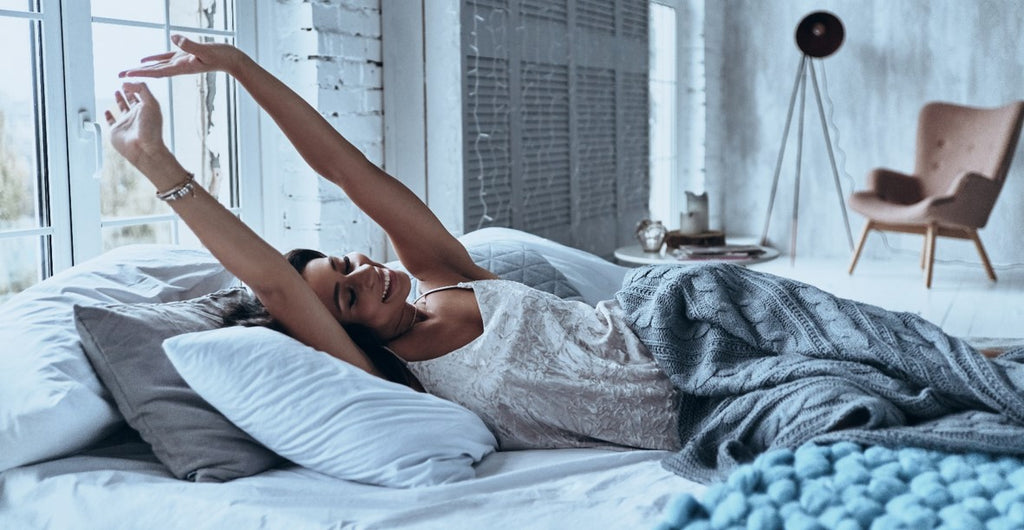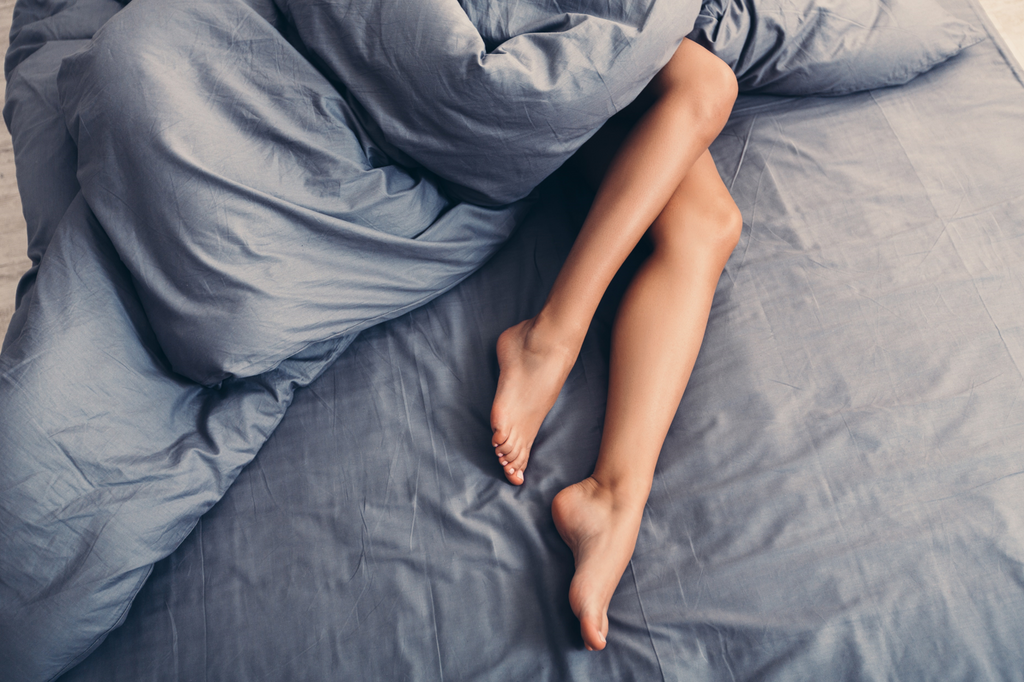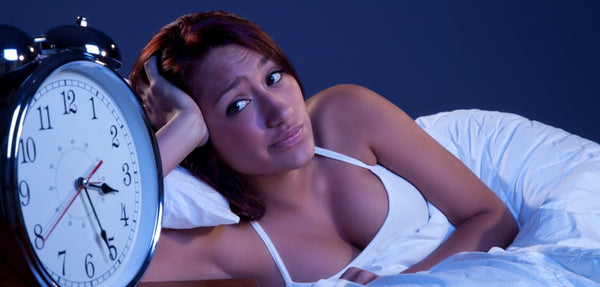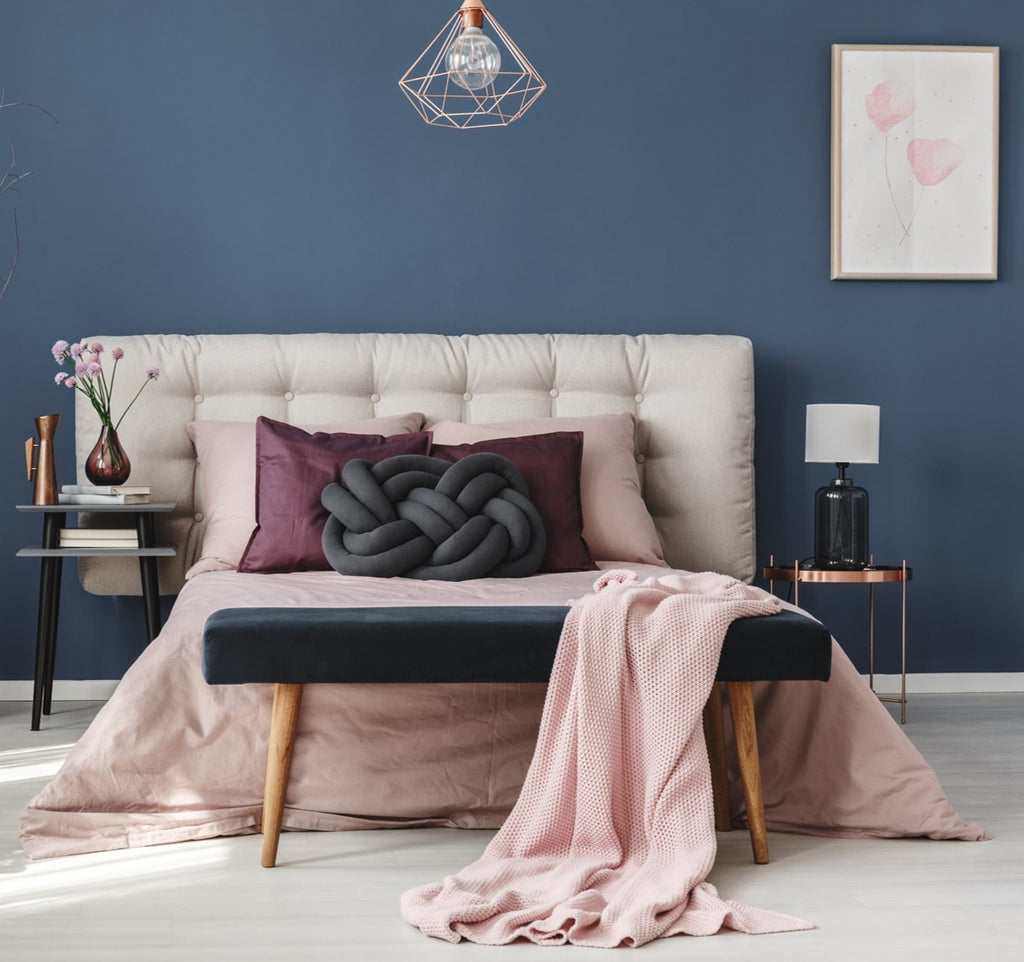- Home
- SHOP ▾
- Store Locator
- Media
- Product Information ▾
- Our Associations ▾
- Warranties ▾
- Advice ▾
- Blog

Sleep is vital to our everyday well being. Getting the right amount of regular sleep will make you feel more energised and motivated, helping you to achieve other goals that you might have for this year, such as doing more exercise,
Try to go to bed and wake up at the same time. It will help create a natural rhythm, and sleep-wake cycle for your body.
Also ensure you are getting the recommended amount of sleep for someone your age. For an adult this is 7-9 hours a night. For a guide on the recommended sleep time for different ages check out https://www.sleephealthfoundation.org.au/how-much-sleep-do-you-really-need.html
Look at what can influence the quality of your sleep, and work on making changes where needed.
“Another reason people get lower-quality sleep following alcohol is that it blocks REM sleep, which is often considered the most restorative type of sleep. With less REM sleep, you’re likely to wake up feeling groggy and unfocused.” - sleepfoundation.org
Ensure your bedroom offers the best possible sleep environment
“A cool 16-18°C (60-65°F) is thought to be an ideal temperature in a bedroom. Temperatures over 24°C (71°F) are likely to cause restlessness, while a cold room of about 12°C (53°F) will make it difficult to drop off.” - Sleep Council UK
It may take a little adjustment for you to get into a new routine, but just remember that if you are getting the right amount of sleep regularly you should feel better and have more energy for the things you want to achieve.
Sleep well, live well

Are you or your partner finding yourself uncomfortably hot at night? Sweating, tossing and turning, resulting in a broken night’s sleep and leaving you feeling lethargic the next day?
Your core body temperature works with your circadian rhythm, to help determine when you are ready to go to sleep and when you are ready to wake up. Your body temperature drops when you begin to feel sleepy and is at its lowest at around 4am, before increasing.
So if you are having difficulty falling asleep or waking up at time you need to consider what maybe affecting your temperature leading up to your bedtime and during the night.
As identified in Time’s article You Asked: Why Do I Sweat When I Sleep by (Markham Heid March 21, 2018)
“Intense exercise too close to bed can also “throw off” the body’s thermoregulation processes, says Michael Grandner, an associate professor and director of the Sleep & Health Research Program at the University of Arizona College of Medicine. He explains that a person’s body temperature naturally dips just before bed, which promotes sleep. Eating or exercising too close to bed can fire up your metabolism, which increases heat production and so may interfere with the body’s natural powering down.”
In order to fall asleep quickly and too help get a good night’s sleep you firstly need to ensure your room is at the ideal temperature.
“A cool 16-18°C (60-65°F) is thought to be an ideal temperature in a bedroom. Temperatures over 24°C (71°F) are likely to cause restlessness, while a cold room of about 12°C (53°F) will make it difficult to drop off.” - sleepcouncil.org.uk/perfect-sleep environment
But remember it is not just the air conditioner or heater that affects the temperature you are feeling when you are sleeping. Your Pyjama’s and bedding can also play a part. You might get into bed feeling cool and comfortable but if you may become hotter during the night due to the materials your Pyjama’s and bedding are made off.
Consider Natural Fibres such as TENCEL™. TENCEL™ is a botanic fibre, derived from sustainable wood sources which are super soft. The Smooth Fiber structure of TENCEL™ absorbs moisture more efficiently than cotton and is breathable helping support the body’s natural thermal regulating mechanism, keeping your skin feeling pleasantly cool and dry.
You may wish to check out our range of Protect-A-Bed TENCEL™ Mattress and Pillow Protectors®
If you have made these changes to help ensure the correct sleeping temperature and you are still waking hot or sweaty consider talking to your doctor. Sometimes the side effects of medication, menopause, hormonal imbalances, anxiety and sleep disorders such as sleep apnea and night terrors may also cause you to sweat when sleep.

Jet lag occurs when you fly across one or more time zones.
Daylight plays an important role in our body’s natural biological clock or circadian rhythm, affecting the release of Melatonin which tells us when we should go to sleep and wake up. Jet lag occurs because our body's circadian rhythm has not had time to synchronise to the change in time zones.
The result, our body is telling us to stay awake when it’s late at night, or telling us it’s time to sleep when it is the only the middle of the afternoon.
Jet lag, affects different people differently, and can happen to anyone regardless of their age or level of fitness.
As recognised by betterhealth.vic.gov.au it is also often worse if you are travelling in an easterly direction
Your circadian rhythm (body clock) is less confused if you travel westward. This is because travelling west ‘prolongs’ the body clock’s experience of its normal day-night cycle (the normal tendency of the body clock in most of us is slightly longer than 24 hours). Travelling eastwards, however, runs in direct opposition to the body clock. If you suffer badly from jet lag, it may be worthwhile considering a westerly travel route if possible.
The symptoms of Jet Lag vary between people. They may include:
Jet lag generally lasts for 2-3 days and although there is no cure there are things that you can do before, during and after travel to help.
Before Leaving
During the Flight
After the Flight
“It is important that you sleep for no longer than 30 minutes and that you are awake for at least 4 hours before you go to bed.”
Most importantly be prepared to give yourself the time to adjust. It will often take at least 2-3 days.

Spring has sprung, footy season is nearing an end, the tulips are blooming and the weather is getting warmer, but it is also allergy season. For many of us this means a stuffy or runny nose, itchy eyes or skin and lots of sneezing.
Pollen
Affecting a lot of people pollen allergies or hayfever are caused by an allergy to the pollen produced by flowers, trees, grasses and weeds. Pollen gets into the home when you open the doors and windows or travels inside on your clothing or with pets. It is often further dispersed through the home by cooling and heating systems.
Dust Mites
Dust mites are one of the most common causes of allergies in the home. Millions of these tiny creatures live in our mattresses, bed linen, carpets and furnishings. Feeding of our skin cells, and producing waste, studies show that are a known cause or trigger of asthma and eczema.
Mould
Mould is often found in damp, poorly ventilated areas such as kitchens, bathrooms and laundries. Mould and bacteria are also often found in mattresses and pillows with our perspiration, shredded skin cells and everyday spills and stains helping provide the perfect conditions for it to grow.
Pets
Fairly common, pet allergies are triggered by pet dander from animals such as such as cats and dogs. Pets also often carry inside other allergens such as pollen and dust.
While there is not a lot you can do to control your outdoor environment, there are things you can do when spring cleaning, to help control your indoor environment, and in particular the bedroom, where seasonal allergies can be triggered all year round.
Get Prepared
Clear the bedroom of clutter
Clean out the wardrobe and dresser drawers
Dust
Wipe down the walls
Clean windows and window furnishings
Clean Flooring
Vacuum soft furnishing
Replace Filters
Strip and clean your bedding
If you or someone in your family suffer from severe allergies, asthma or eczema consider using Protect-A-Bed®’s Fully Encased Mattress Protectors.
The fully encased Protect-A-Bed® Allerzip® Mattress and Pillow Encasement's feature a unique BugLock® system. which has a dust mite proof flap and Secure Seal® providing total protection. Preventing dust mite, mould and bacteria allergens entering or escaping through the zipper.
Simply Fit n’ Forget by layering a Protect-A-Bed® Fitted Mattress Protector over the top for regular washing and drying with other linens.
Finally consider keeping flowers (with pollen) and pets out of the bedroom.
Sit back, relax and enjoy the warmer days and remember if your allergies are triggered by pollen stay indoors on dry windy days and especially after storms as these are peak periods for airborne allergens.

Pets are part of our family and many of them sleep with us in our beds. Snuggling up to us, providing affection, comfort and security, but is it healthy?
Although an adult cat sleeps for about for 12-16 a day and an adult dog 12-14 hours they can be up and down in the night. Scratching, washing, having a midnight snack, or wanting to go outside. All things that may disrupt your sleep leaving you feeling tired the next day.
And while the risks are low, cats and dogs carry bacteria that can be passed to us when in close contact. They also shed dirt, pollen from running around outside, and pet dander a common cause or trigger of asthma and allergies.
So for a healthier night’s sleep, whilst enjoying the company of your pets here are some tips you may wish to follow:
If you have a puppy, consider how big it is going to get. Sleeping with it while it is young might be comfortable but what happens when it gets older and bigger. Training a dog, which is going to outgrow the ability for you to comfortably share a bed, to sleep somewhere else, is much easier when they are a puppy and before habits are formed.
And if you suffer from allergies or asthma which can be triggered by pet dander, consider giving your pet lots of affection before bedtime and keeping your sleep areas separate.
Always avoid letting pets sleep with babies and young children.

Friday the 15th of March is World Sleep Day, an annual event arranged by the World Sleep Society, designed to raise awareness of the importance of sleep and draw attention to sleep related issues, and this years focus is on Healthy Sleep, Healthy Ageing.
As we age, our sleep patterns and the amount of sleep we need to help maintain our physical and mental health changes.
“As we get older, the hormones that help us sleep are released earlier in the day. Some older adult’s may feel sleepy earlier than they used to and they may wake up in the early hours of the morning. Melatonin is a hormone that is produced naturally in the body at night which promotes sleep. Older people make less melantonin so they may find it difficult to get off to sleep. Other factors may interfere with sleep and cause awakenings during the night. These include hot flushes in postmenopausal women and the need to go to the toilet during the night.” – Sleep Health Facts Ageing and Sleep. Sleep Health Foundation.
The affects of a lack of sleep on our daily lives and functioning can be significant. A lack of sleep can result in:
And those who are regularly not getting enough sleep tend to look and feel older than they are and have an increased risk of contracting diseases that are associated with ageing such as diabetes and heart disease.
So if you are not getting enough sleep every night, for your long term health and well being, beginning today, make a conscious effort to make some changes that may assist you in getting a better night’s sleep.


www.sleephealthfoundation.org.au/older-people-and-sleeping.html

School holiday’s are here again and along with keeping your little one’s occupied with activities and play dates it can be tempting to let them stay up that little bit later.
And as tempting as it is, remember that whether you are staying at home or going away it is important that you try to maintain a regular sleep pattern for your children. Without it they will become tired and grumpy, making your days more difficult and when the holiday’s are over you will have to battle to get them back into their bedtime routine.
As recommended by the Sleep Health Organisation “Bed time should not vary by more than an hour between school and non-school nights” and “the same goes for the time your child wakes up”
To help with this in the holiday’s ensure that you give your children time to relax before bed. Put away toys and turn of screens. Anything stimulating. Try reading a favourite book or listening to some calming music.
If you are travelling and away from home, a different environment can make it difficult for them to settle. Take with you a toy, pillow or blanket that your child associates with sleep. It will make them more comfortable and assist in them getting to sleep.
When travelling also ensure that where you are staying has Protect-A-Bed® Mattress and Pillow Protectors. An unprotected mattress or pillow is home to millions of dust mites, mould and bacteria which may cause allergens, asthma and eczema.
30% of us are allergic to dust mites so chances are if you or your family are sleeping on an unprotected mattress while away asthma and allergies are more likely to occur. None of us want to get sick, or have sick children, when away on holidays!
And for those of you who have children still bedwetting, consider taking an extra mattress protector or linen protector of your own with you. Pop it on the bed and if an accident occurs you can easily remove it in the night, getting back to sleep quickly with the knowledge that the mattress your child is sleeping won’t become wet or stained.
With the holiday’s coming to a close, if you have not been able to maintain the consistent bedtime at the start of the holidays, get back to a normal routine before school starts. If bedtime has become later than usual, slowly push it back by about 15 minutes or so a night until it is where it should be.
A fun holiday activity that encourages children to keep to their bedtime is making a Sleep Clock. Head to the Sleep Health Foundations website and download a easy to use template created by Professor Kurt Lushington from the University of South Australia.
Everyone deserves the simple pleasure of a good night’s sleep.